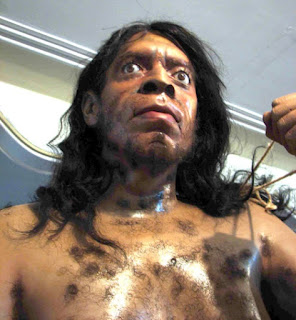Neanderthal Extinction Ideas Raise Questions
In bygone days, Neanderthals were considered to be an evolutionary link to modern humans. That nonsense has been fully discredited, evolutionists acknowledge that Neanderthals were fully human. By the way, the -th at the end is pronounced without the "h" sound, Neandertall is more correct. (Well, they were not all that tall, but never mind about that now.) So how did they become extinct?
Nobody knows why they went extinct. Maybe it was global warming. (This child wonders if they were assimilated instead of extinct.) Those folks traveled a great deal, and they were generous in sharing their DNA with other people groups — many people today have Neanderthal DNA and some of their features. (Another bit of wondering on my part: although the Neanderthal remains were first discovered in the Neander Valley. Was that their home base or just one of the stops on their journeys?) Speculations about their disappearance are based on evolutionary presuppositions. Things make far more sense using the biblical timeline and factoring in recent creation, the migration after the Genesis Flood, and the dispersion at Babel.
 |
| Credit: Wikimedia Commons / Rawansari at English Wikipedia (CC by-SA 3.0) |
To finish reading, meander on over to "Neanderthal Extinction Dilemma".How did Neanderthals go extinct? Four researchers from the Netherlands recently published the results of their computer-modeled human populations in the journal PLOS ONE. The findings show that small Neanderthal population sizes would have caused them to become extinct in just 10,000 years. How did Neanderthals survive the 400,000 years they were supposedly on Earth?Neanderthals were real people. Hundreds of recovered bones show big brow ridges, sloping foreheads, and thick upper arms. They buried their dead, made music, jewelry, used makeup, and built tools for hunting and even surgery.